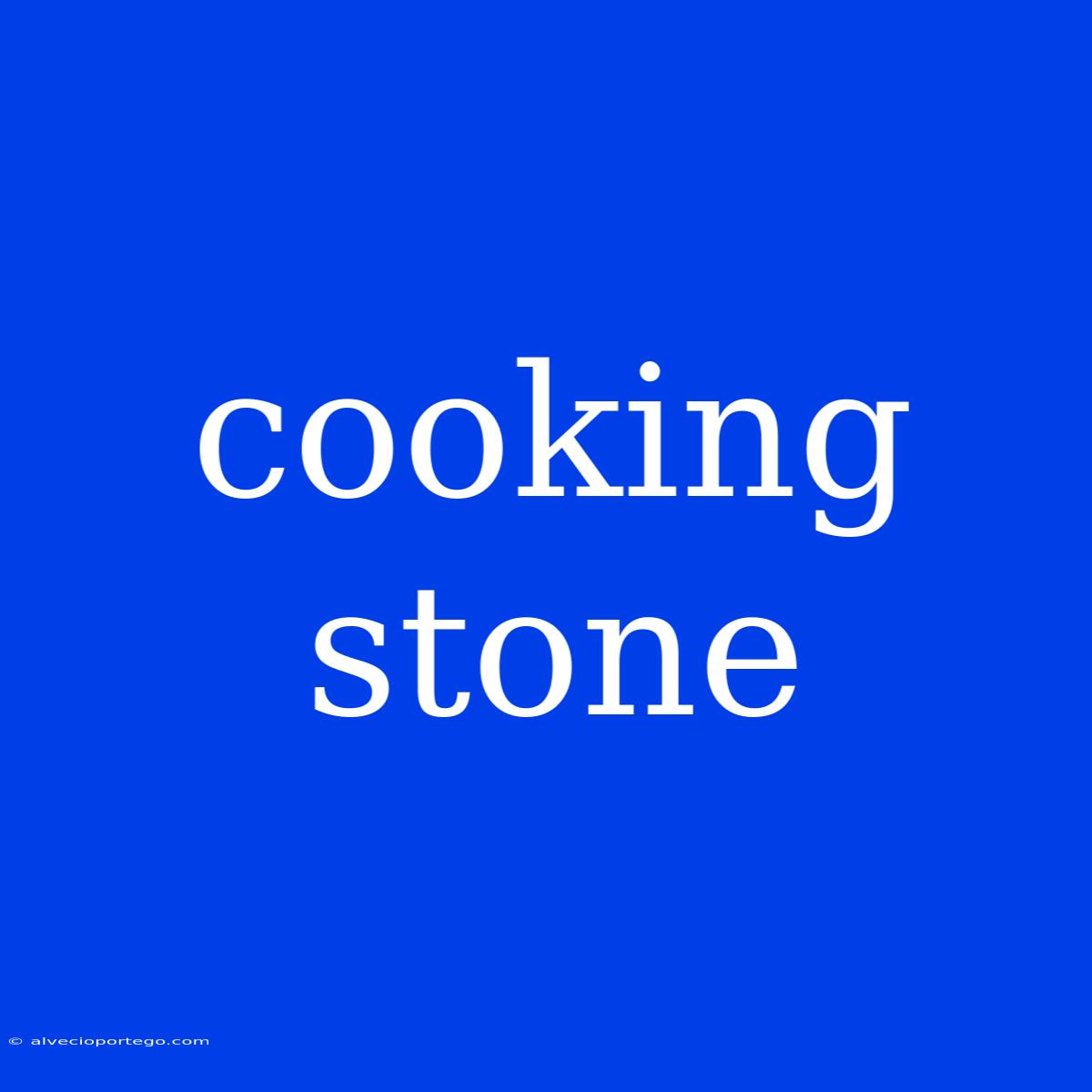Cooking with Stone: A Timeless Tradition
Cooking with stone has been a practice for millennia, dating back to the earliest civilizations. It's a simple, sustainable, and often surprisingly versatile method of preparing food, offering a unique flavor and texture that can't be replicated using modern appliances.
The Basics of Stone Cooking
Stone cooking relies on the ability of stone to absorb and retain heat. This allows for a slow and even cooking process, ideal for various dishes. There are two primary methods:
1. Direct Heat Cooking: This involves placing food directly onto a hot stone surface, like a flat griddle or a volcanic rock. This method is perfect for searing meats, grilling vegetables, or baking flatbreads.
2. Indirect Heat Cooking: In this method, food is placed inside a pit or oven lined with hot stones. The stones transfer their heat to the air and food, resulting in slow, gentle cooking. This is ideal for roasting large cuts of meat, baking bread, or even smoking fish.
Types of Stones for Cooking
1. Volcanic Rocks: These are highly porous and retain heat exceptionally well. They are often used for direct heat cooking, especially in outdoor settings.
2. Soapstone: This type of stone is smooth and non-porous, making it perfect for baking and roasting. It also has excellent heat retention properties.
3. Sandstone: While not as porous as volcanic rocks, sandstone can be used for both direct and indirect heat cooking. It is known for its durability and resistance to cracking.
4. Granite: A versatile stone that can be used for both cooking and serving. Its smooth surface is ideal for baking and grilling.
Benefits of Stone Cooking
- Unique Flavor: Stone cooking imparts a unique earthy flavor to food, especially when using volcanic rocks.
- Nutrient Retention: Slow cooking with stone preserves the natural nutrients and moisture of food.
- Sustainable: Stone is a natural and renewable resource, making it an eco-friendly cooking method.
- Versatility: Stone cooking can be used for a wide variety of dishes, from simple grilling to elaborate baking.
Stone Cooking in the Modern World
While stone cooking is often associated with ancient traditions, it is experiencing a resurgence in popularity. Modern interpretations of stone cooking include:
- Stone Griddles: These are flat, heated stones that can be used on the stovetop or outdoor grill.
- Stone Pizza Ovens: These ovens are built with firebricks, creating a hot environment ideal for baking pizzas and other breads.
- Stone Baking Pans: These pans are made of soapstone or granite and can be used for baking bread, pastries, and even casseroles.
Conclusion
Cooking with stone is a timeless tradition that offers a unique and flavorful way to prepare food. It's a sustainable, versatile, and often surprisingly simple method that can be enjoyed in both modern and traditional settings. Whether you're grilling vegetables on a hot volcanic rock or baking bread in a stone oven, stone cooking is a testament to the power of nature and the simple pleasures of cooking.

